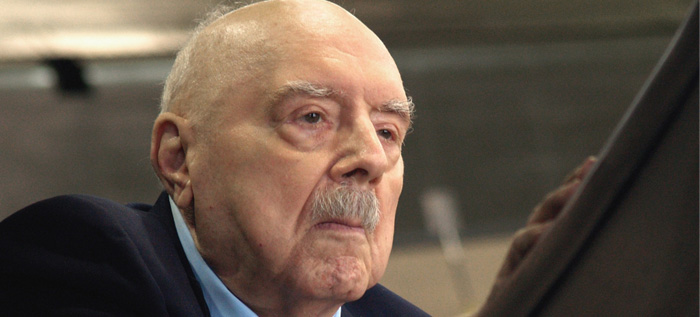
Born: October 25, 1919, Philadelphia, PA
Died: February 11, 2008, Haverfords, PA
Opinion.National Aviation Hall of Fame about Piasecki: .”… He is one of the founding fathers of the modern helicopter and we are proud to enshrine him in the National Aviation Hall of Fame.”
Early days. Born to immigrants from Poland- father Nikodem, a tailor and mother Emilia nee Lotocki- Piasecki got his first taste of flight at age seven, when his father bought him a plane ride in a barnstormer. Ten years later in 1936, a teenaged Piasecki enjoyed an autogyro ride with America’s first licensed rotary wing pilot, Lou Leavitt. For Piasecki, the flight transformed what was already an intense interest in aviation into a burning desire to develop his own aircraft designs. At the time, the hot topic in aviation was vertical flight. Although primitive helicopters had been developed, they lacked real practicality. Piasecki set out to change this. He worked for autogyro manufacturers while still attending Overbrook High School, then studied mechanical engineering at the University of Pennsylvania before graduating in 1940 with a bachelor's degree from New York University.
Career. In 1940, he formed PV Engineering Forum with former Pennsylvania classmate Harold Venzie. They avoided using the word “helicopter” in its name, he said, because “people would have laughed.” He built a single-person, single-rotor helicopter designated the PV-2 and flew it on April 11, 1943. This helicopter impressed the United States Navy sufficiently to win Piasecki a development contract. In 1945 he flew the world’s first successful tandem rotor helicopter, the first designed for the U.S. Navy. The name PV Engineering was changed to Piasecki Helicopter Corporation in 1946. In 1948 a HUP prototype was the first helicopter to complete an aerial loop, and later a HUP-2 would become the first production helicopter equipped with an auto-pilot feature. Making its first flight in October 1953, the massive Piasecki YH-16 was designed in response to a U.S. Air Force requirement for a long-range rescue helicopter that could pick up downed bomber crews. With a rotor diameter of 82 feet and a fuselage large enough to carry three light trucks, the YH-16 easily attained status as the world’s largest helicopter. So big, in fact, was the machine that it had two separate engine rooms. A turbine-powered version of the helicopter, the YH-16A, went on to set an unofficial speed record of 166 miles per hour in 1956. After a boardroom dispute, Piasecki and a group of his employees left Piasecki Helicopter in 1955 and formed the Piasecki Aircraft Company. At Piasecki Aircraft, he participated in the development of the Piasecki 16H-1 the world's first shaft driven compound helicopter, the PA-59K/VZ-8P Flying Geep, the Piasecki PA-97 Helistat heavy vertical airlifter and the Piasecki X-49 experimental compound helicopter. Piasecki’s experimental designs continued with the 16 H-1 Pathfinder helicopter. Debuting in 1962, the aircraft was Piasecki‘s first single rotor helicopter since the PV-2 20 years earlier. The 16 H-1 combined exceptional vertical-lift characteristics with speed and maneuverability comparable to that of a fixed-wing craft. An improved Pathfinder, the 16H-1A, flew three years later, reaching speeds up to 225 miles per hour—extremely fast even by today’s standards. Such performance was made possible by the combination of a lift wing and a tail-mounted ducted propeller that Piasecki called a “Ring Tail.”In 1994 he was engaged in improving the speed, range, maneuverability and agility of theAH-64 Apache and the AH-1W Super Cobra by adding a wing and his “Ring-Tail.”
Private Piasecki was married to Vivian O'Gara Weyerhaeuser on December 20, 1958. They had seven children, Nicole, Frederick, John, Lynn, Frank, Michael, and Gregory. His son John is now President and CEO of Piasecki Aircraft. His son Fred is Chairman of the Board and Chief Technology Officer of Piasecki Aircraft. His daughter Nicole Piasecki is vice president of Business Development & Strategic Integration for Boeing Commercial Airplanes.
Awards 1954 Mendel Medal; 1979 Philip H. Ward, Jr. Medal from The Franklin Institute; 1986 National Medal of Technology - President Ronald Reagan presented Piasecki with the country's highest technical honor; 2002 Frank Piasecki biography on National Aviation Hall of Fame site; 2005 Smithsonian National Air and Space Museum Lifetime Achievement award.
This article uses, among others, material from the Wikipedia article "Frank Piasecki"
Wikipedia
Text is available under the Creative Commons Attribution-ShareAlike License; additional terms may apply.
Other sources of information from:
New York Times
National Aviation Hall of Fame
Return to home page:
Prominent Poles
